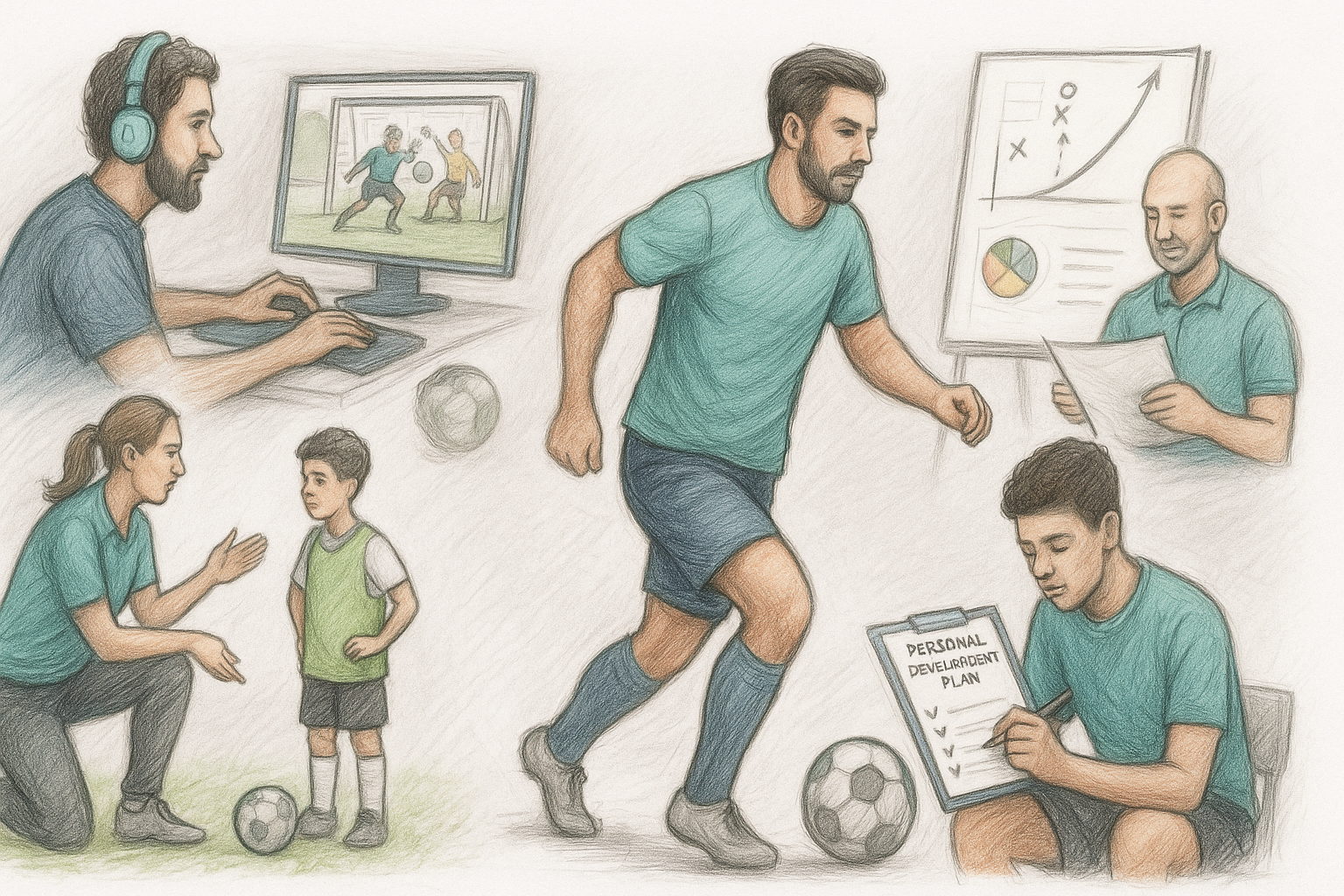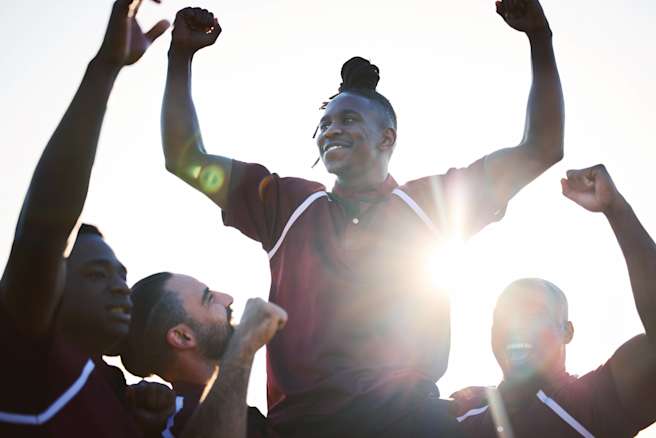5 ways to measure sprint speed for soccer

It is no secret that a fast sprinting speed is important in a football (soccer) match. So, as a coach you may want to test the sprinting speed of your players. What is the best way to measure sprint speed? And what distance should you measure? We’ll explain what distance to measure and provide 5 solutions to capture sprint speed of your players.
What is the best distance for a sprint test for football (soccer) players?
During a match the average sprint distances are approximately between 10-30m,1 with most sprints being shorter than 20m.2 Nevertheless, the importance of sprints >20m is not to be underestimated. Studies have shown that sprinting speed at these distances is a differentiating factor between playing levels3 and is associated with key attacking and defensive performance indicators in football.4
So, which sprinting distance should you test?
Generally, 0-10m is seen as a good indicator for the initial acceleration phase5. 0-20m sprint time is good if you want to know your full acceleration speed and 20-30m is suitable to estimate your maximum sprinting speed.5
Conclusion: for football (soccer) it is easiest to perform one 30m sprint in which you register your speed for each 10m interval.
5 types of test solutions for sprint tests in football
We describe 5 ways to measure a sprint. The options are ordered from expensive to affordable. The more expensive solutions are more often used in professional football teams whereas the more affordable ones by academies and grassroots.
1. Advanced GPS sensors

Advanced GPS sensors like InMotio are used by professional clubs. These position systems have a very high sampling frequency of 10Hz. Meaning they identify your position 10 times per second. For comparison, your average smart watch has a sampling frequency of 1 Hz per second. Because of this high frequency, it is possible to identify your speed at every moment of your run. Making it the most accurate measure possible. However, as you might expect from a system used by the pro’s, it is very expensive to use!
2. Infrared timing gates
A bit more accessible way to measure sprint speed is the use of Timing gates. These gates are often used in sport science research and talent identification programs. Timing gates consist of two poles with an infrared sensor, which register the exact moment you pass between them. Placing these gates at 10m intervals will allow you to register your time for each split. Using the 20-30m split time (and a little bit of simple physics speed = time / distance), you can get a good picture of your maximum sprinting speed. By looking at the 0-10m (early acceleration phase) and 10-20m (late acceleration phase) split times you will find your acceleration speed. However, with prices ranging from €1200,- to €2399,- this option is still not very affordable for most grassroots teams. A high end solution is for instance Perform Better.
3. Wearable sensors with accelerometer

Ranging between €50 and €200, wearable sensors with accelerometers are a more affordable solution for your average grassroots player. It works great for tracking number of sprints, sprint distance and sprint speed during a training session or matches.
Not surprisingly, as the focus of the sensor is on match statistics rather than stand-alone tests, it is not very suitable to test your 30 meter sprinting speed. Footbar for instance gives you an indication of the fastest speed averaged over 2sec during your sprint, which makes it a great tool to summarise your sprints during a match, but not accurate enough if you are really interested in each part of your sprint. Other sensors to consider are TeamFX from Adidas, Statsports, Oliver and Xseed.
4. Smartphone App with AI Video analysis
Recently computervision AI has become more widely available and a variety of apps. Because these AI models can be used with mobile phones, the tests are more more accessible and affordable. Of course, expensive timing gates or LPS systems will provide you with accurate results on the mili second, but if you want good enough measurements for a fraction of the cost: this is the way to go. Currently in Beta, Mingle Sport has developed a 30m sprint test. All you need for the test are 4 cones and your smartphone with the app. Similarly to the infrared timing gates, it allows you to see your speed for each 10m split.
5. Old-fashioned stopwatch
Requiring no money, just a little bit of time and some people, is the old-fashioned way. Place cones at 0m, 10m, 20m and 30m and get 3 stopwatches ready. Blow a whistle and start each stopwatch. Stop the 1st when the player reaches 10m, the 2nd when the player reaches 20m and the last when at 30m. Use some simple math (or Excel) to determine each interval time. You can then calculate the speed for each interval. The good thing about this method: the better your reflexes with the stopwatch, the more accurate the result.
Literature:
Reilly, T. (1976). A motion analysis of work-rate in different positional roles in professional football match-play.
Di Salvo, V., Baron, R., González-Haro, C., Gormasz, C., Pigozzi, F., & Bachl, N. (2010). Sprinting analysis of elite soccer players during European Champions League and UEFA Cup matches.
J Sports Scie, 28(14), 1489-94*.* doi: 10.1080/02640414.2010.521166 **
Baumgart, C., Freiwald, J., & Hoppe, M. W. (2018). Sprint mechanical properties of female and different aged male top-level German soccer players.
Sports (Basel), 6(4), 161*.* doi: 10.3390/sports6040161
Faude, O., Koch, T., & Meyer, T. (2012). Straight sprinting is the most frequent actino in goal situations in professional football.
J Sports Sci, 30(7), 625-31. doi: 10.1080/02640414.2012.665940
Young, W., Rusell, A., Burge, P., Clarke, A., Cormack, S., and Stewart, G. (2008). The use of sprint tests for assessment of speed qualities of elite Australian rules footballers.
Int J Sports Physiol Perform, 3(2), 199-206. doi: 10.1123/ijspp.3.2.199.





